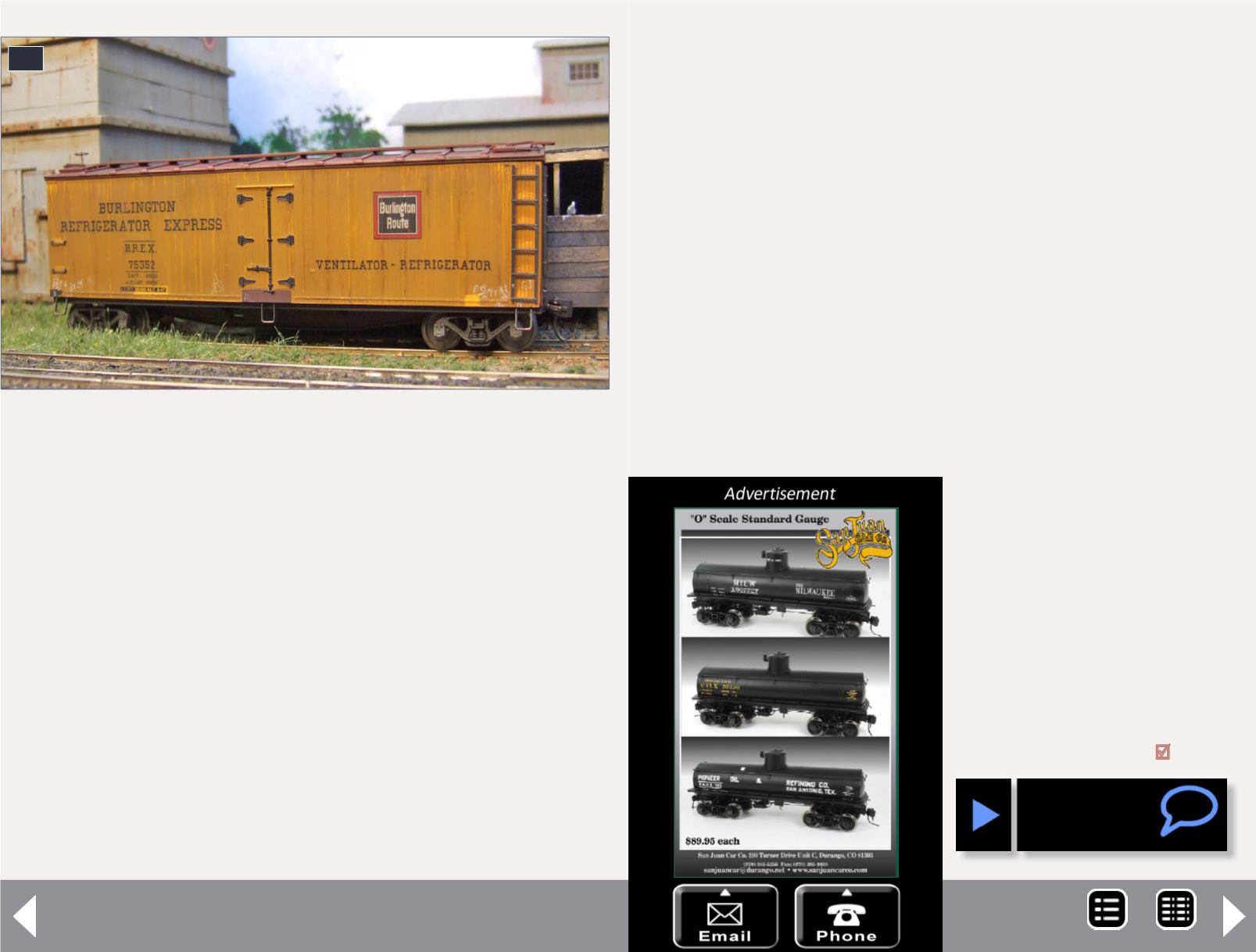
11
Accurail wood reefer
11. This model was repainted and decaled with the
Microscale decal set for BFEX reefers. The molded-on
grab irons and ladders were replaced with wire and
plastic ones. The car was finished by over-spraying it
with a Dullcote mixed with a couple of drops of black
and brown to tone down the sides. After the Dullcote
was dry a new #11 X‑Acto blade was used to remove
some of the Dullcote mixture around the grab irons
and ladders, where trainmen would have climbed on
the car. A few individual boards were also picked out
with the X-Acto blade to age the car sides more.
Weathering freight cars - 7
White and yellow pencils
The best white pencil for adding chalk marks is made by
Prismacolor; the number on the pencil is PC938. To be hon-
est, the yellow pencils don’t do a great job, and you could skip
them all together. The important thing is to weather some of the
white pencil marks to age them, and have some contrast to new
marks. I use white and yellow pencils where a conductor, engine
foreman, carman made chalk marks on a steam-era car. Look at
vintage freight car photos to see the variety of numbers and let-
ters used by different railroads. Put one on, and gently rub it off,
then add another next to it, to show the aging process.
Oil paints
I use mostly black and brown to denote oil and grease. Mix a little
with mineral spirits and dab around the journal boxes to show
there the carman added oil. I also put some on the door latches
and along the lower door
guide where a carman would
have greased these areas.
Conclusion
I hope this short introduction
into weathering inspires you to
get started on your fleet. The
techniques I use are very easy,
they just take a bit of prac-
tice. In no time at all you can
weather your cars like a pro. So
jump in and get started.
MRH-Jun 2014


